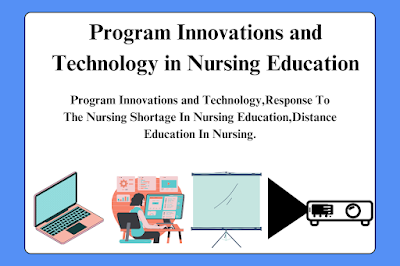Technology in Nursing Education and Program Innovations
Program Innovations and Technology
Over the last few years, nursing education has received much attention from the media and public. First there was the nursing shortage and how schools of nursing were responding, and then came the faculty shortage and what nursing programs were doing about a shortage of educators. Nursing education is no longer invisible-these shortages have impressed on the public the importance of nurses and the programs that prepare them.
What better publicity could we have asked for? Nursing education has always been a leader among the health professions in developing innovative programs, using technology for teaching and for delivering education to those who otherwise would not have access, and responding quickly to changing societal health needs. Until recently, though, most of our educational innovations were known only within nursing.
Not anymore. The attention given by the media to the nursing and faculty shortages has highlighted our innovations to prepare more nurses and deliver education to students across geographical boundaries while considering their work and family responsibilities.
Many nursing faculty have embraced technology, rushed to develop online courses and programs, and marketed their courses and programs similarly to selling other products. Some of the current efforts are direct responses by schools to the nursing shortage. But are we clear about the future directions of our programs? Do we know where we are going with these efforts?
The purpose of this chapter is to examine selected trends in distance education in nursing and future directions. Schools of nursing need to be clear about the goals and intended outcomes of their programs and whether a particular innovation or technology should be used considering those outcomes and their resources. Faculty are responsible for maintaining the quality of their programs and assuring the public of that quality.
Our innovations in delivering programs and teaching students cannot sacrifice the quality of the education. Although this has always been important, it is more so now because nursing is the focus of media coverage and of interest to the public.
Response To The Nursing Shortage In Nursing Education
According to the projections from the US Bureau of Labor Statistics (2004), more than 1 million additional registered nurses (RNs) will be needed by 2012. In those reports, nursing is identified as the occupation with the largest job growth.
Low student enrollment in earlier years, an aging nursing workforce, more elderly persons requiring health care, and more complex needs of patients in hospitals and other care settings have contributed to the demands for more RNs. For many years nursing programs had to market their programs vigorously to maintain enrollment, and those years have clearly had an impact on the current shortage.
With the growing interest in nursing as a career and the demand for nurses, enrollments in entry-level nursing programs have increased significantly (American Association of Colleges of Nursing (AACN), 2003b; National League for Nursing, 2003). However, these increases will not compensate for the low enrollment over the last decade or for the number of nurses who are retiring.
Schools of nursing have responded to the nursing shortage by developing new and innovative programs and using technology to deliver those programs to students, many of whom otherwise would not have access to nursing education.
Although there are many initiatives ongoing at individual schools of nursing, the use of distance education by more and more schools to deliver their programs to students is particularly notable.
Distance Education In Nursing
Distance education in nursing continues to develop at a phenomenal pace. It is becoming difficult to find a nursing program, public or private, that does not offer courses for distance education or at least some form of online instruction.
Although some faculty are concerned that distance education has initiated the demise of the traditional classroom and nursing program, others view it as creating an opportunity for nursing to prepare students across geographic boundaries, relieving shortages in rural and other areas where there are no schools of nursing .
Distance education and Web-based technologies allow for career advancement for nurses no matter where they live and offer nursing education that is flexible and takes into consideration work and family responsibilities. Many students cannot attend a traditional nursing program but can learn at a time and place convenient for them.
The flexibility inherent in distance education programs makes them attractive to RNs who want to advance their education yet are unable to do so for the same reasons as students who cannot pursue an entry-level program. Many distance programs in nursing are intended for RN-BSN students (Grumet & Gilbert, 2004).
Although these programs do not ease the shortage in terms of numbers of graduates, they increase the educational level of nurses, which meets yet another need preparing more nurses at the baccalaureate and higher levels. Distance education programs for RNs in the future may shift more toward RN-MSN tracks, preparing nurses for advanced nursing practice rather than offering them bachelor's degrees in nursing.
Along the same line, distance education provides a means of offering accelerated BSN PhD programs to nurses in areas where there are no doctoral nursing programs and for specialized areas of nursing education that are not available in a particular school.




Give your opinion if have any.